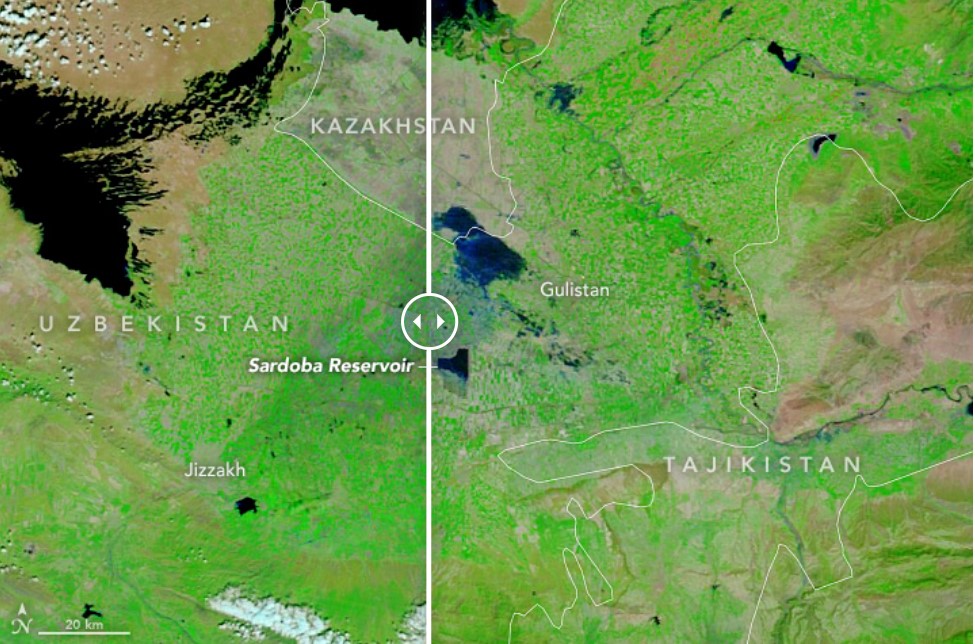D3: Dams and State Borders in Central Asia – Pre-programmed Conflicts?
Dr. Beate Eschment (ZOiS) and Dr. Henryk Alff (HNEE)

Foto: Dam Failure in Uzbekistan in Sardoba, May 2020 © NASA Earth Observatory images by Lauren Dauphin, using MODIS data from NASA EOSDIS/LANCE and GIBS/Worldview
Project description
The issue of access to and the distribution of water triggers many local, regional and international conflicts in arid Central Asia. Dams and water reservoirs can be a particular source of controversy, especially if they are located close to a border or are even transboundary. Project D3 aims to examine the potential for conflict associated with two such dams/water reservoirs as well as the conflict resolution strategies pursued in each case. To this end, we analyse the representations and attitudes of state institutions, (state) media and the affected local population on both sides of the border.
The first case study is the Sardoba water reservoir in northern Uzbekistan, only a few kilometres from the border with Kazakhstan. A breach of the dam on 1 May 2020 also flooded localities and agricultural land in Kazakhstan. After initial intergovernmental tensions, an amicable solution was found at the highest level. However, relatively little is known about the views of the affected population.
The second case study deals with the Kempir-Abad/Andizhanskiy reservoir on the border between Kyrgyzstan and Uzbekistan in the Fergana Valley. Its territorial affiliation was already disputed during the Soviet era – and still is today. A border treaty ratified at the highest level in autumn 2022 despite many opposing votes, stipulates that the territory of the reservoir will fall to Uzbekistan and Kyrgyzstan will receive about four times that land area elsewhere in exchange. However, the initially local protests against this in Kyrgyzstan have now developed into a domestic political crisis that shows no signs of being resolved.
Key questions
Methodology and sources
Project team

Dr. Henryk Alff

